Cataracts in the Boston Terrier
Early-Onset Hereditary Cataract in Boston Terriers
Early-onset hereditary cataract in Boston Terriers is a condition that was first described in 1978 (Barnett 1978). In this disorder, cataracts are bilateral and can be diagnosed as early as 8-12 weeks of age, but are not congenital. Obvious cataracts occur between 9 and 15 months of age with further progression and maturity of the cataract between 2-4 years. The condition has an autosomal recessive mode of inheritance.
The mutation, or change to the structure of the gene, probably occurred spontaneously in a single dog but once in the population has been inherited from generation to generation like any other gene. The disorder shows an autosomal recessive mode of inheritance: two copies of the defective gene (one inherited from each parent) have to be present for a dog to be affected by the disease. Individuals with one copy of the defective gene and one copy of the normal gene - called carriers - show no symptoms but can pass the defective gene onto their offspring. When two apparently healthy carriers are crossed, 25% (on average) of the offspring will be affected by the disease, 25% will be clear and the remaining 50% will themselves be carriers.
The mutation responsible for the disease has recently been identified at the Animal Health Trust (Mellersh et al 2006, Mellersh et al 2007). Using the information from this research, we have developed a DNA test for the disease. This test not only diagnoses dogs affected with the disease but can also detect those dogs which are carriers, displaying no symptoms of the disease but able to produce affected pups. Under most circumstances, there will be a much greater number of carriers than affected animals in a population. It is important to eliminate such carriers from a breeding population since they represent a hidden reservoir of the disease that can produce affected dogs at any time.
The test is available and information on submitting samples is given below. Breeders will be sent results identifying their dog as belonging to one of three categories:
|
CLEAR: |
the dog has 2 copies of the normal gene and will neither develop Early-Onset Hereditary Cataract, nor pass a copy of the Early-Onset Hereditary Cataract gene to any of its offspring.
|
|
CARRIER: |
the dog has one copy of the normal gene and one copy of the mutant gene that causes Early-Onset Hereditary Cataract. It will not develop Early-Onset Hereditary Cataract but will pass on the Early-Onset Hereditary Cataract gene to 50% (on average) of its offspring.
|
|
AFFECTED: |
the dog has two copies of the Early-Onset Hereditary Cataract mutation and is affected with Early-Onset Hereditary Cataract.
|
Carriers can still be bred to clear dogs. On average, 50% of such a litter will be clear and 50% carriers; there can be no affecteds produced from such a mating. Pups which will be used for breeding can themselves be DNA tested to determine whether they are clear or carrier.
Samples submitted should be cheek swabs which are supplied free of charge from the address below. Samples should be sent together with a completed DNA Testing form and payment for each sample to Genetic Services, Animal Health Trust, Lanwades Park, Kentford, Newmarket, Suffolk CB8 7UU. DNA Testing forms can be downloaded from http://www.aht.org.uk. DNA Testing forms and swabs are available from Mrs Symone Ingram (01638 555621) or via e-mail to dnatesting@aht.org.uk.
Related Articles
Related Genetic Test
Help Future Generations of Dogs
Participate in canine health research by providing samples or by enrolling in a clinical trial. Samples are needed from healthy dogs and dogs affected by specific diseases.



